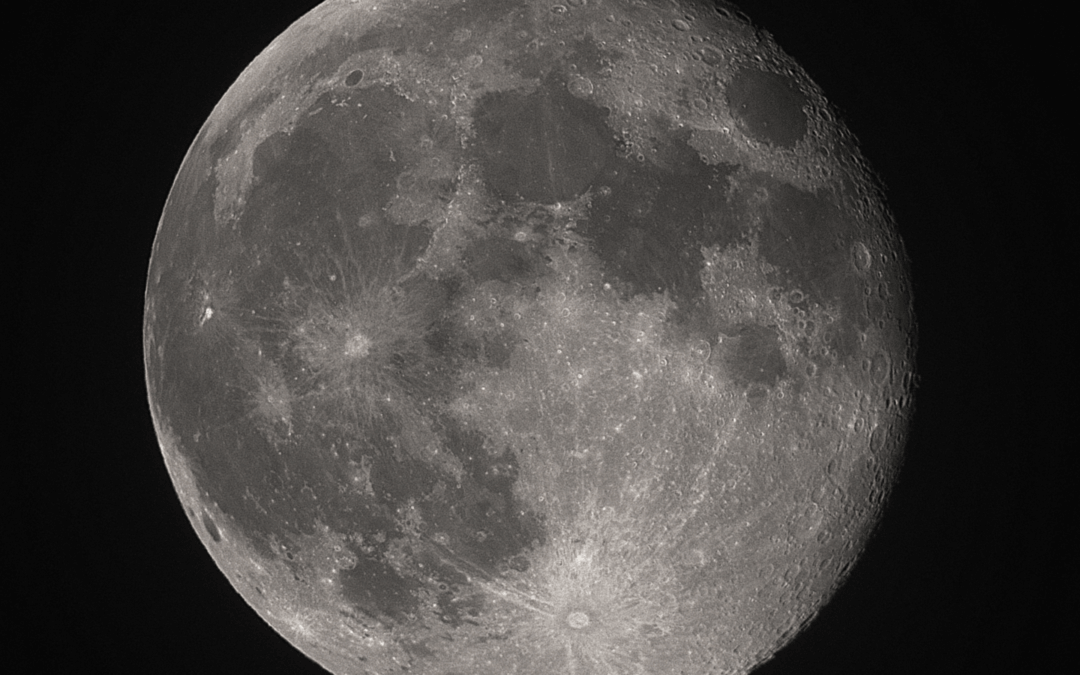Since the Eta Aquariid meteor shower peaks this month, Unistellar Citizen Astronomers are invited to participate in this week’s quest to observe celestial objects in the Aquarius constellation!
Quick facts about the Aquarius constellation:
- In Latin, Aquarius means “the water-bearer” or “cup-bearer.”
- Aquarius was associated with floods throughout ancient history, like the destructive floods in Babylonia and the annual flooding of the Nile River in ancient Egypt.
- In the 2nd century, Aquarius was catalogued by the Greek astronomer, Ptolemy.
- Sadalsuud (also known as Beta or β Aquarii) is the brightest star within Aquarius.
- Aquarius is the 10th largest constellation in our sky (out of 88).
- In the Southern Hemisphere, the best time to view Aquarius is Spring. For the Northern Hemisphere, the best time is Fall.
- Currently, Aquarius is best viewed in the Southern Hemisphere, but is also visible in the early morning hours of the Northern Hemisphere.
Stars in Aquarius
Notable stars within Aquarius include:
- Sadalsuud (Beta or β Aquarii): the brightest star within the Aquarius constellation and is a yellow supergiant star
- Sadalmelik (Alpha or α Aquarii): the second brightest star in Aquarius and is also a yellow supergiant star
- Skat (Delta or δ Aquarii): the third brightest star in Aquarius and is a blue-white star
- Sadachbia (Gamma or γ Aquarii): a binary star system. Binary star systems are two stars that orbit each other.
- Albali (Epsilon or ε Aquarii): a white-colored star, 3 times the mass of our Sun
- Situla (Kappa or κ Aquarii): a binary star system, about 214 light years away from us
- Ancha (Theta or θ Aquarii): a yellow-hued star, located near the ecliptic so it can pass behind the Moon (and rarely planets)
- Bunda (Xi or ξ Aquarii): a binary star system, about 180 light years away from us
Observing Tips:
- Search for “aqr” in the Explore tab of the Unistellar app. What shows up will be all the stars and deep-sky objects in the Unistellar app database within the Aquarius constellation.
- We recommend using the Enhanced Vision mode when viewing stars to bring out their colors.
- Depending on the sky quality at your location, you may want to leave the Enhanced Vision mode on for a few seconds.
Deep-Sky Objects in Aquarius
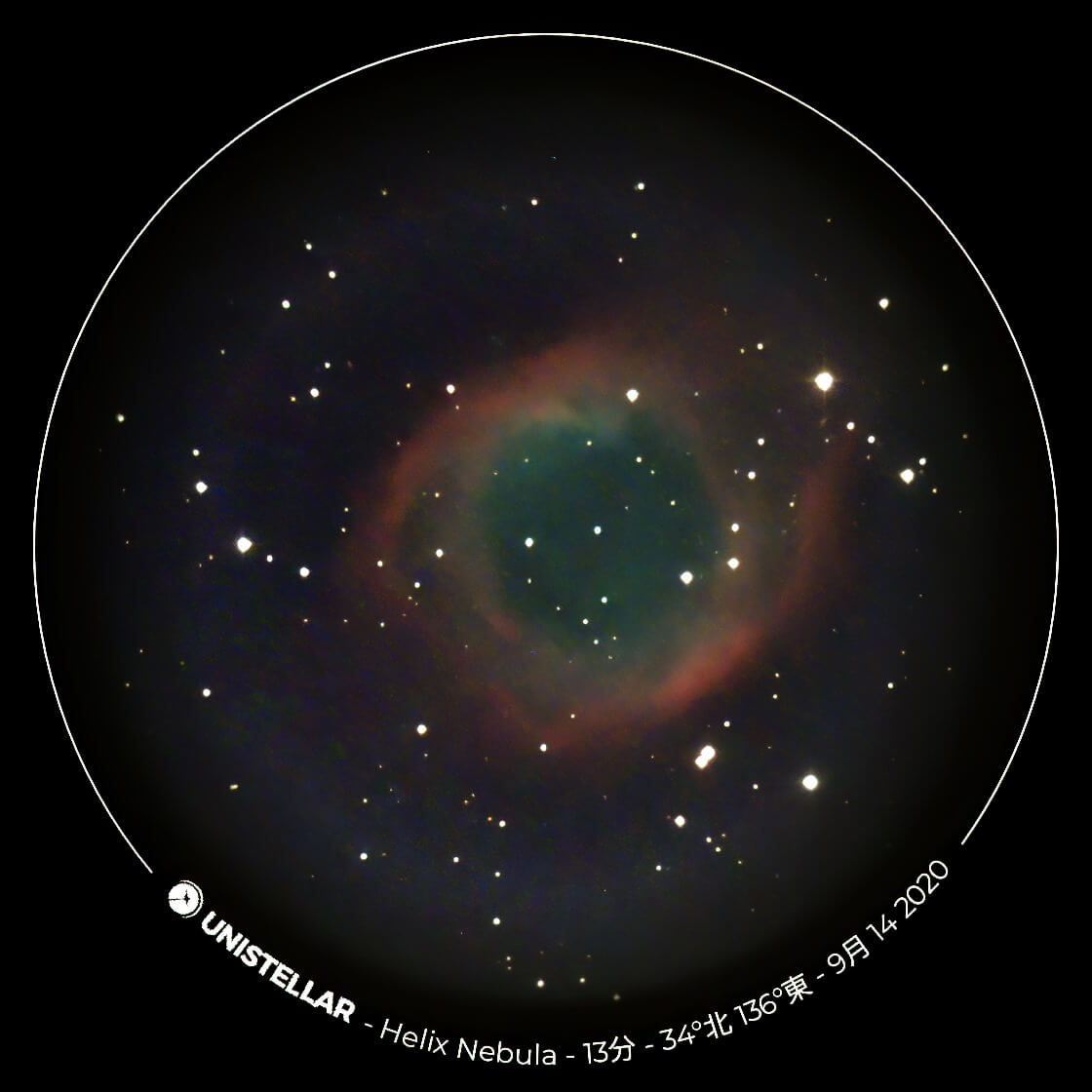
eVscope image captured by Unistellar Citizen Astronomer 後藤干城 Tateki Goto, from Osaka, Japan
Helix Nebula
The Helix Nebula (NGC 7293) is 650 light years away, making it the closest nebula to us. When you look into your eVscope, you’re seeing the Helix Nebula as it was 650 years ago! The Helix Nebula is a planetary nebula, meaning that it formed from a dying star as it ejected its outer layers. Those outer layers, made of gas, expand and form the shape of the nebula.
Observing Tips:
- Search for “NGC 7293” or “Helix Nebula” in the Explore tab of the Unistellar app.
- Depending on the sky quality at your location, you may want to leave the Enhanced Vision mode on for at least 10 minutes.
- Recommended Bortle Class is 5 or lower.
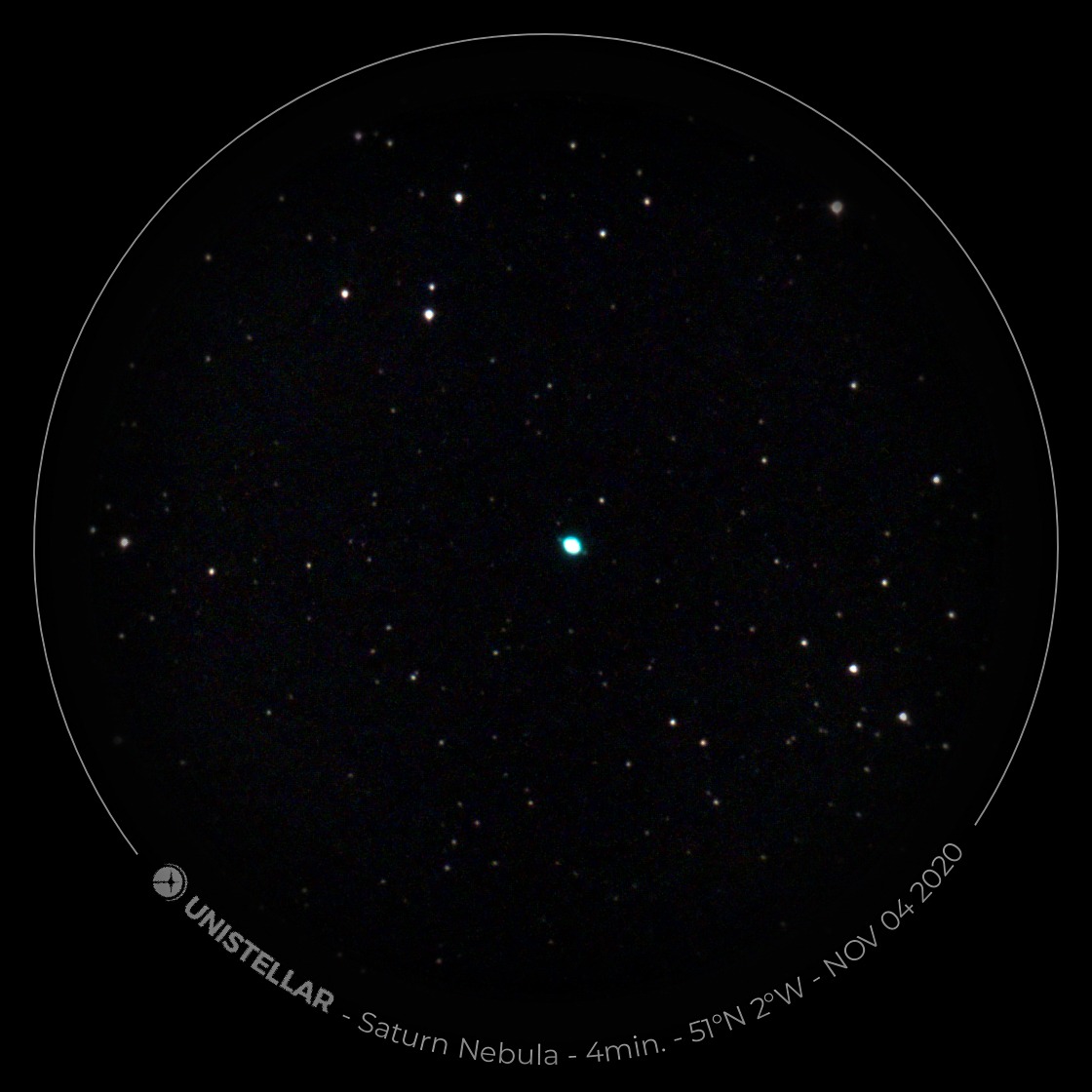
eVscope images of M35 and NGC 2158 captured by Unistellar Citizen Astronomer David Rowe, from Wimborne, United Kingdom
Saturn Nebula
The Saturn Nebula (NGC 7009) is another planetary nebula, formed from a low-mass star. William Parsons, 3rd Earl of Rosse coined its name in the 1840’s from its resemblance to the large orb of Saturn and its large, luminous rings.
Observing Tips:
- Search for “NGC 7009” or “Saturn Nebula” in the Explore tab of the Unistellar app.
- Depending on the sky quality at your location, you may want to leave the Enhanced Vision mode on for at least a few minutes
- Recommended Bortle Class is 5 or lower.
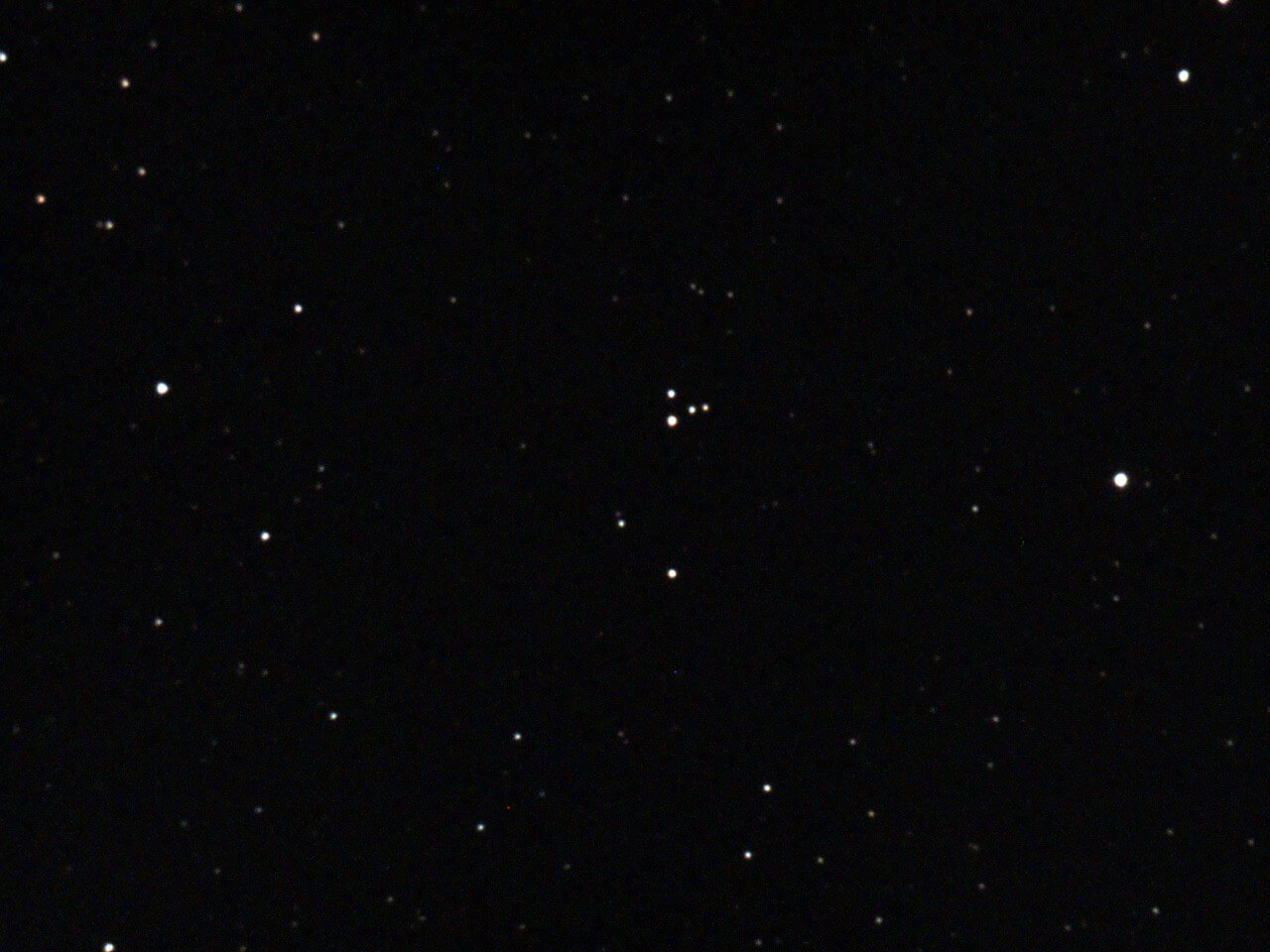
eVscope image captured by Unistellar Citizen Astronomer Gerd Waloszek, from Germany
Messier 73
Messier 73 (M73) is an asterism, a pattern or group of stars that looks like a shape in the sky, like a constellation. This particular asterism is made of 4 stars which are not related to each other. When Charles Messier discovered M73, he originally thought it was a star cluster surrounded by dust and gas.
Observing Tips:
- Search for “M73” in the Explore tab of the Unistellar app.
- Depending on the sky quality at your location, you may want to leave the Enhanced Vision mode on for at least a few minutes
- Recommended Bortle Class is 7 or lower.
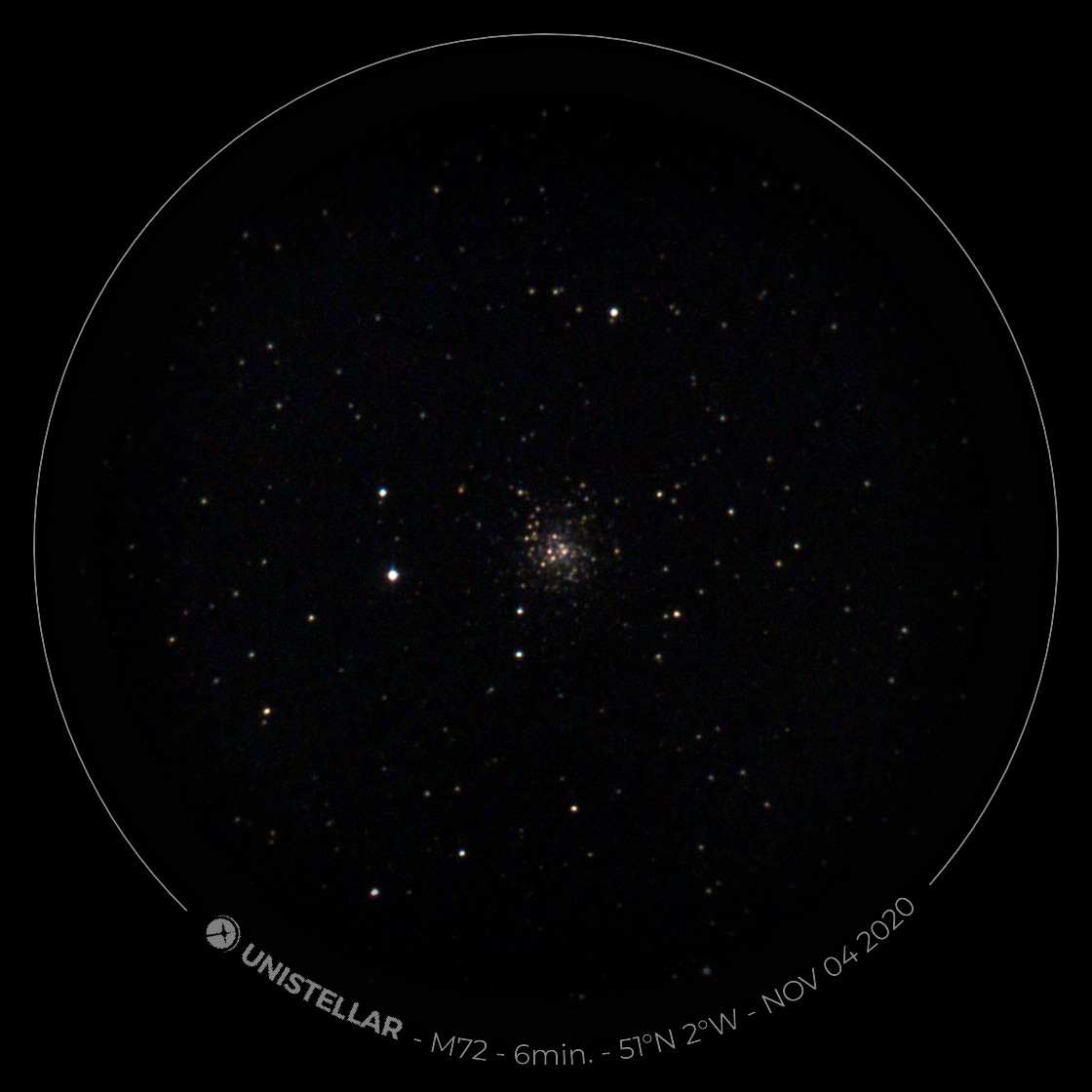
eVscope image captured by Unistellar Citizen Astronomer David Rowe, from Wimborne, United Kingdom
Messier 72
Messier 72 (M72) is a globular cluster, a densely packed group of hundreds of thousands of stars that all formed together at the same time. It is one of the smallest clusters in the Messier Catalog and is about double the distance from our galaxy’s center to us.
Observing Tips:
- Search for “M72” in the Explore tab of the Unistellar app.
- Depending on the sky quality at your location, you may want to leave the Enhanced Vision mode on for at least a few minutes
- Recommended Bortle Class is 6 or lower.
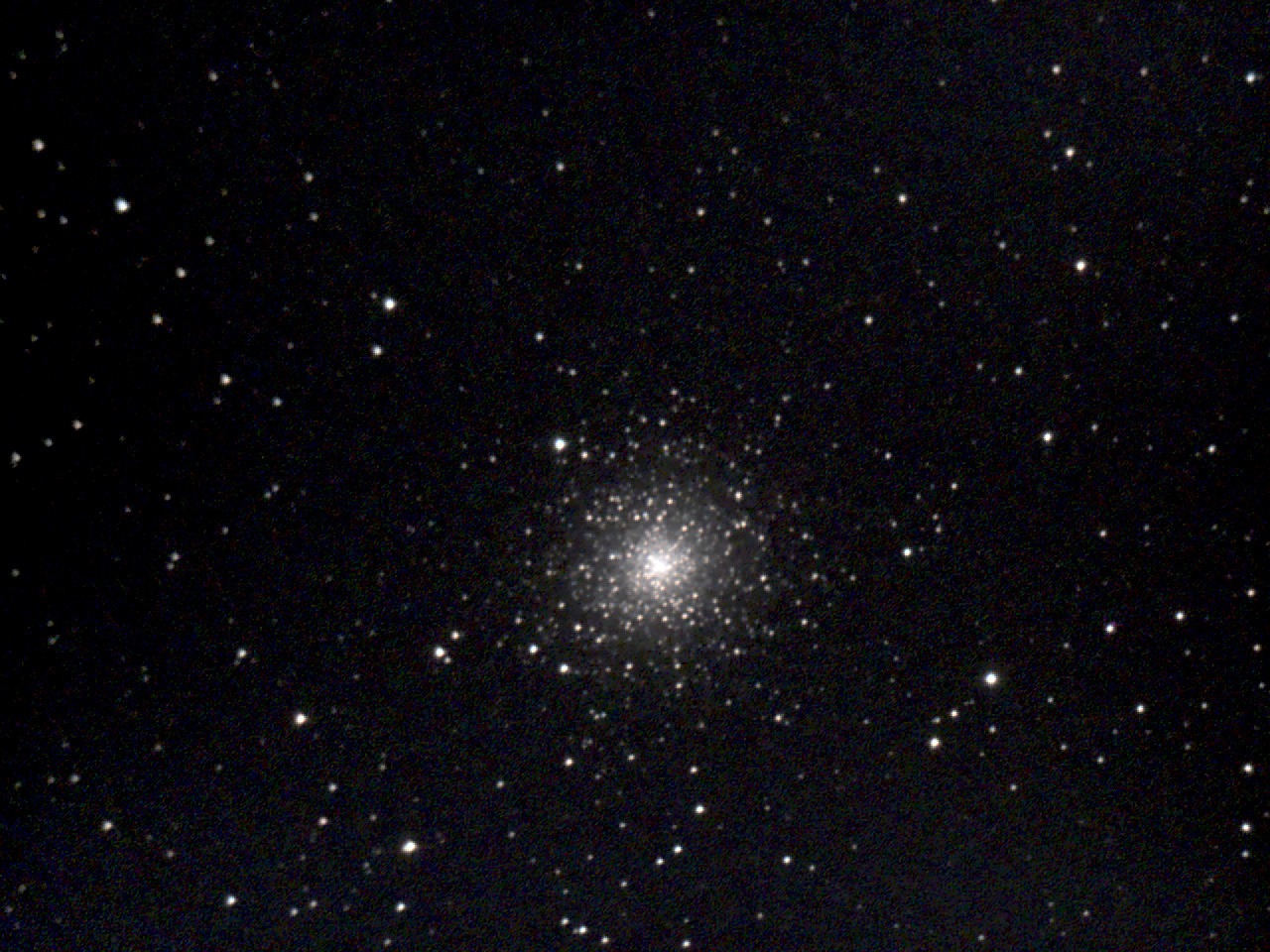
eVscope image captured by Unistellar Citizen Astronomer Gerd Waloszek, from Germany
Messier 2
Messier 2 (M2) is also a globular cluster. It is one of the largest globular clusters known and home to some of the Milky Way’s oldest known stars. Being about 13 billion years old, M2 is almost as old as our visible universe! (For reference, our visible universe is about 13.8 billion years old.)
Observing Tips:
- Search for “M2” in the Explore tab of the Unistellar app.
- Depending on the sky quality at your location, you may want to leave the Enhanced Vision mode on for at least a few minutes
- Recommended Bortle Class is 7 or lower.
We encourage you to share your observations and join the conversation through our Facebook, Instagram and Twitter pages using the hashtag #UnistellarChallenge!
If you’d like to send us your observations by email, send them to [email protected].
Clear skies! 🔭
Further readings
3 Reasons to observe this month
On Jupiter: Imagine moons casting their shadows on a giant planet. Right now, Jupiter’s moons offer an exceptional show: eclipses visible even from urban areas. Each time a moon passes in front of the Sun, it creates a shadow that dances across Jupiter’s surface. Check our dedicated article to catch every passage of Io, Europa, or Ganymede.
Observing Eclipses on Jupiter: Cosmic Spectacles Through a Telescope
The latest Unistellar App Update, version V3.0, is now live. Explore a smooth stargazing experience !
Unistellar Community Included In Multiple Scientific Papers
Did you know Unistellar Citizen Astronomers are often cited in published scientific papers? Find out how you can contribute too!
What Are the Names of All the Full Moons in 2024?
Discover the enchanting names of the full moons in 2024. Delve into the unique character of each lunar spectacle and embrace the allure of the night sky.
New Unistellar App Update: Version 3.0
The latest Unistellar App Update, version V3.0, is now live. Explore a smooth stargazing experience !
What to Observe This November: Open Star Clusters and More
These Halloween deep-sky objects will add some light to those dark, spooky nights. Treats, tricks, and telescopes await!




